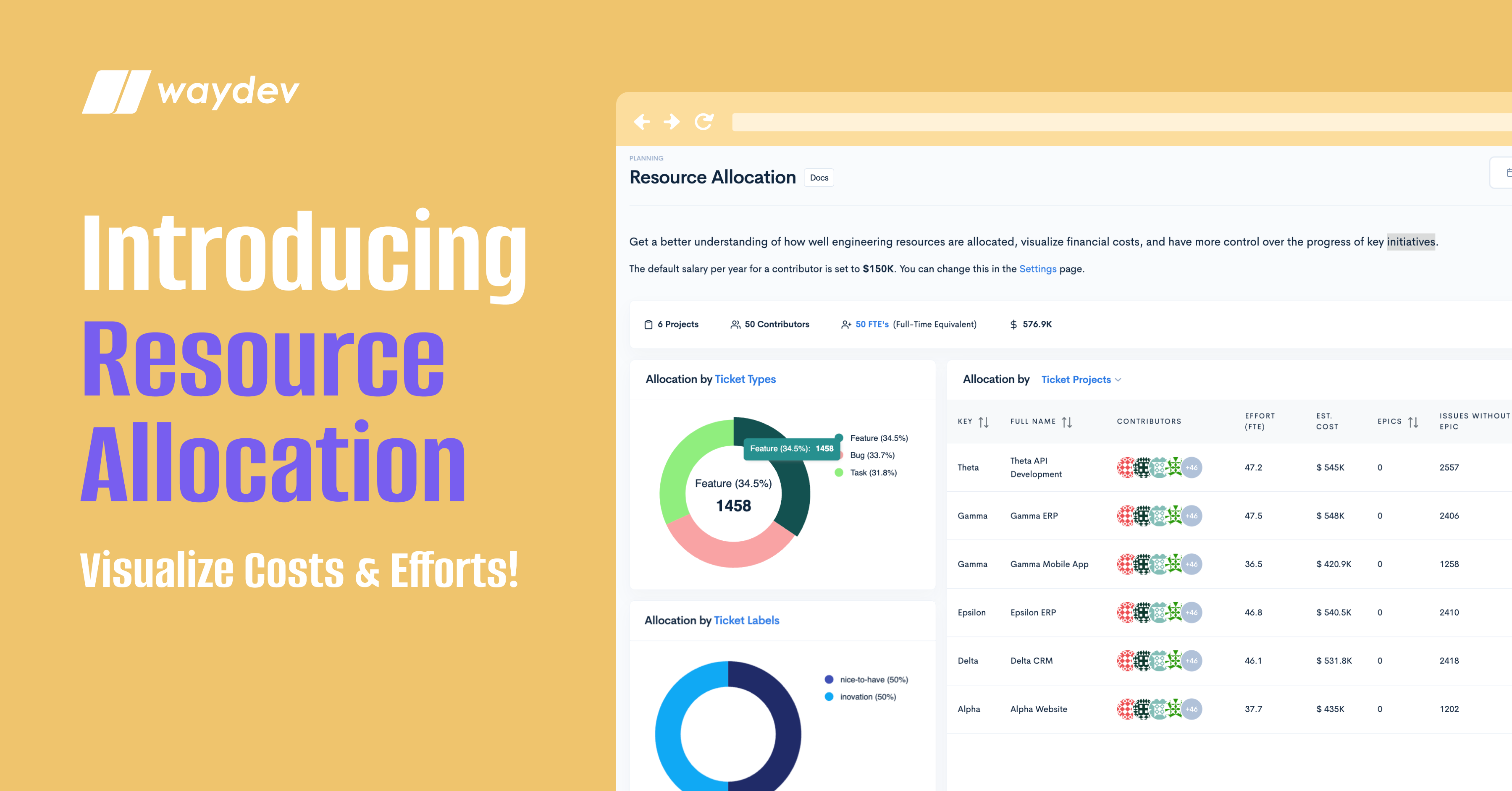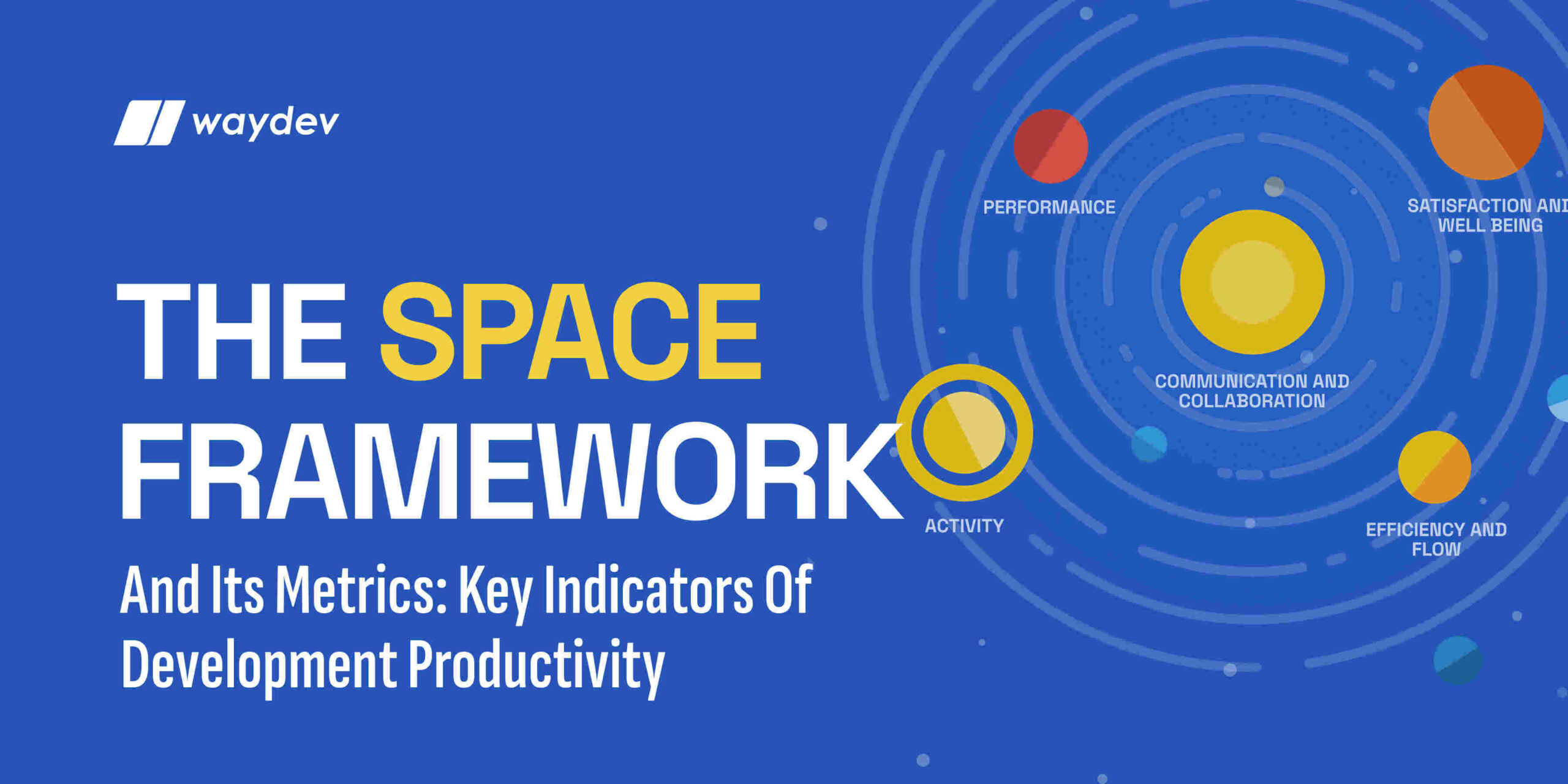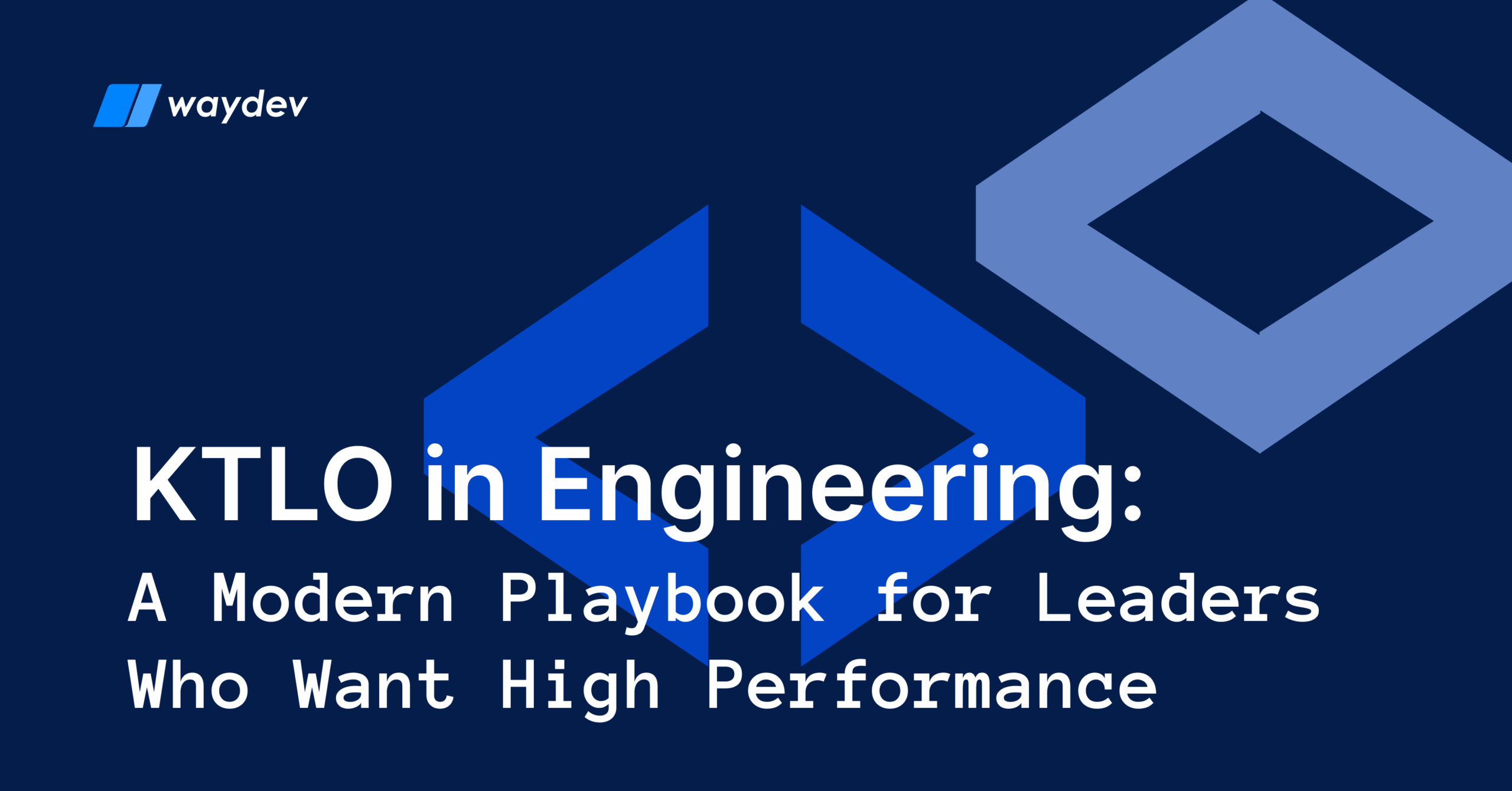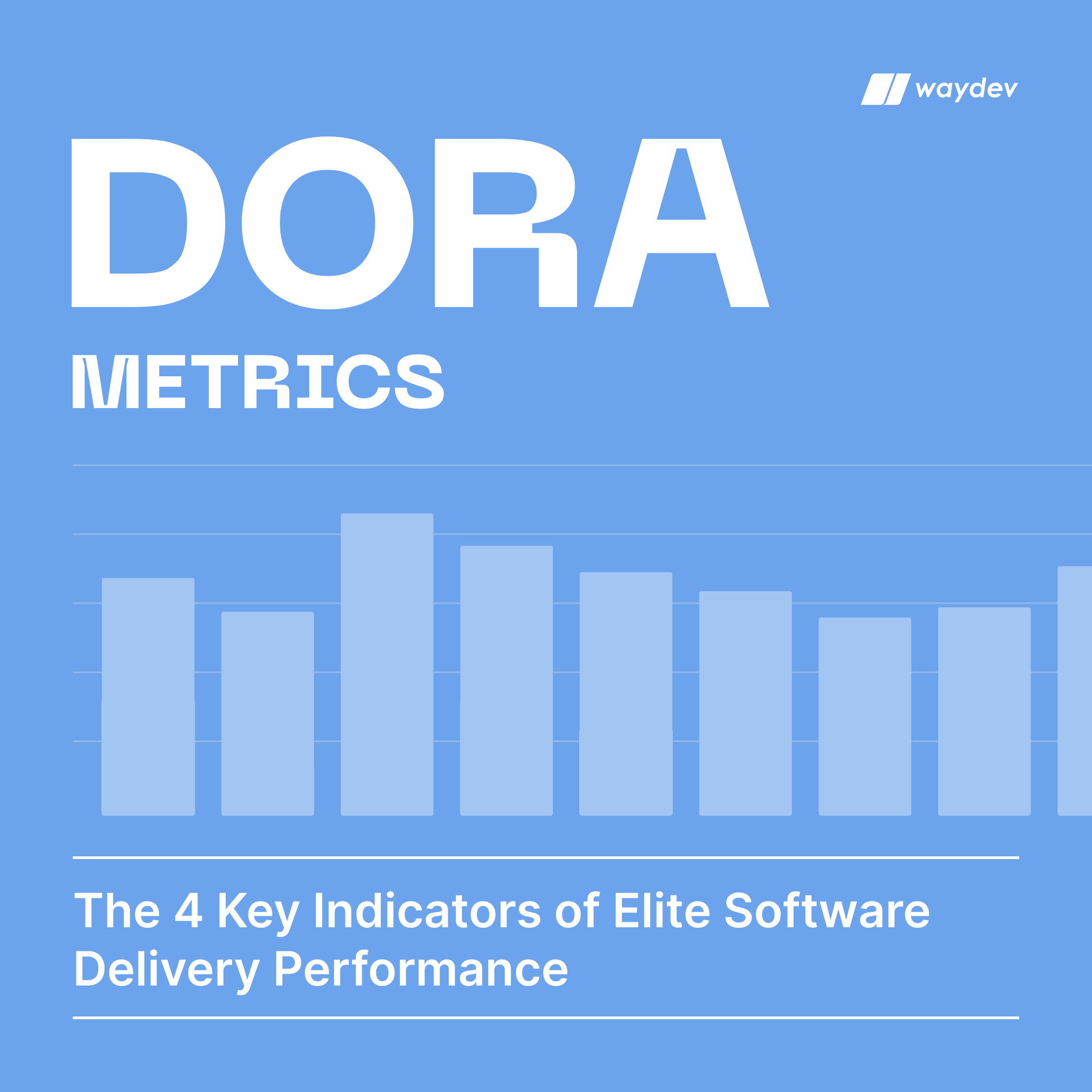Download the whole article here
Key Takeaways
- Enterprise release management (ERM) is crucial for coordinating multiple software projects in large organizations.
- ERM ensures smooth product delivery and alignment with business objectives while addressing complexity across departments.
- Automation and effective human management are essential in ERM to improve processes and enhance release visibility.
- Best practices for ERM include coordinating releases, ensuring all steps are followed, and fostering continuous improvement.
- Waydev’s platform provides key metrics and insights to help enterprise release managers enhance performance and reduce engineering efficiency loss.
Release management on its own is challenging for organizations and managers, but when volume increases at enterprise levels, things get even tougher and more complicated.
The need to orchestrate distributed teams with members that sometimes reside in different parts of the world and focus on different business lines requires a high level of expertise and planning.
To respond to this fast-paced environment and the constant need for change and improvement, enterprise release managers need to correctly and rapidly assess multiple projects, prioritize deliverables, and identify bottlenecks and improvement opportunities.
At Waydev, we understand that these responsibilities are complex and that a data-driven approach is crucial for enterprise release management success. Our development analytics intelligence platform offers instant, easy access to key metrics and performance indicators that enable engineering leaders to compare projects, make decisions, and constantly improve.
This article will focus on the main challenges encountered by enterprise release managers. We will clarify ERM best practices that accommodate change efficiently and increase release velocity.
Enterprise release management – the framework
Enterprise release management (ERM) is an IT governance framework that focuses on the software development lifecycle of several projects at once. It manages software development and software change across multiple departments in large organizations.
Enterprise release management focuses on the actual delivery of the product, covering the configuration of hardware, software, applications, and infrastructure, while also taking into account code and database structures. Moreover, it ensures complete alignment with business objectives and risk mitigation.
To do so, ERM combines release management practices with Business Relationship Management, IT Service Management, and Configuration Management. Its objective is to ensure the correct, successful delivery of significant, complex software changes.
Although a relatively new framework, enterprise release management is now considered crucial in the current environment. Organizations have several portfolios made of smaller, independent projects deployed by individual DevOps teams.
The role of enterprise release managers is to ensure that test teams and infrastructure components are prepared before the actual release. Moreover, they are the ones who always know the project’s status and its next steps.
With Waydev connected to your toolstack, engineering signals aretranslated into real-time metrics and reports, designed to help you increase release velocity, gain visibility, and foster a culture of continuous improvement.
Enterprise release management’s place in the new world of automated DevOps environments
Automation has become a key pillar of today’s tech environments, as it contributes to organizational success, ensuring that resources are always available and distributed efficiently.
The question then arises: is there still a need for release management at an enterprise level?
As we will see, the short answer is yes. Large, enterprise-level organizations need a well-coordinated release pipeline to generate financial savings and optimize the budgets allocated to regulatory taxes. People are an essential part of the equation in overseeing software releases’ planning, scheduling, and managing software releases. The professionals that manage operations and deployment are the ones who identify bottlenecks and create strategies that increase performance.
DevOps enables enterprises to foster a culture of visibility that brings together tools, automation, and people. The ultimate goal is to successfully deploy significant changes that contribute to a faster, more reliable environment.
In automated DevOps environments, enterprise release management is still needed to identify what to automate and constantly measure results without disrupting the activity, thus playing a relevant, substantial part in the DevOps landscape.
Enterprise release management best practices for successful managers
If your organization isn’t fully taking advantage of DevOps and continuous delivery has yet to be mastered, it might be because your enterprise release management could use some enhancement.
To ensure that large organizations achieve agility with DevOps, the whole company needs to understand the importance of enterprise release management and regard it as a practical end-to-end process that facilitates success. There are several enterprise release management best practices that you need to consider.
Effectively coordinate multi-project releases
Enterprise release management covers multiple projects that affect a large-scale organization, addressing everything from strategic planning to creating schedules and execution plans that offer structure to teams and companies. Not to mention, several change initiatives are synchronized and delivered as a whole. This cohesive approach to release architecture increases overall productivity and reduces the chances for change disruption.
This pragmatic, wholesome, end-to-end approach generates significant responsibilities for enterprise release managers, who need to orchestrate projects’ deployment to applications carefully.
To successfully coordinate multi-project releases, ERMs need to schedule and manage the organization’s priorities, considering the various applications involved and their associated portfolio streams. Professionals must work closely with IT release managers, take into account their portfolios and projects, centralize their deliverables and priorities, and create the company’s IT Release Calendar.
Doing this efficiently is a challenge for professionals in charge of enterprise release management because there is often a lack of visibility into engineering teams’ work. This generates confusion in the project, making it difficult for engineering managers to know whether everything is on track.
This is where Waydev comes in. Our development analytics intelligence platform highlights the status of each project, its costs, and the associated resources through our Project Costs report. It also emphasizes the capacity, thus enabling enterprise release managers to correctly assess and coordinate multiple projects.
Automation and human management in ERM
To make enterprise-level decisions and foster a transparency culture, ERMs need to have a clear view of what is happening in the organization. They need to know how release-related processes progress and translate them into objective metrics and key performance indicators. Moreover, they also have to ensure that business units and other stakeholders have a constant view of the project’s progress and a clear, attainable release timeline.
Another enterprise management challenge is to automate data collection and interpretation. Given the dynamic environment and the large teams of tens or even hundreds of people, there is no time for manually gathering facts. Professionals are encouraged to use their expertise in areas where they make a difference instead of focusing on mundane, repetitive tasks.
Organizations that use Agile software development tools ensure that they automatically have access to all relevant project data to know when to push the release button.
Waydev enables you to monitor important metrics, like Cycle time, without requiring manual input from team members. An indicator of your organization’s development velocity, Cycle time showcases the velocity of the execution.
Continuously improving the process
You can’t discuss enterprise management best practices without considering continuous improvement. A data-driven approach is crucial to fully and deeply understand release processes and identify opportunities to make them more efficient.
Focusing on continuous improvement pushes delivery processes to the next level, which benefits teams and the organization.
While assessing enterprise release management practices, the manager might identify, for example, slow build times and discover that some libraries are not cached on the servers. Given that the pipeline must download the packages constantly, it is significantly slowed down. When metrics point in that direction and ERMs have all the necessary information, they can fix the issue and improve the workflow.
To foster and support a culture of continuous improvement, managers need to have easy access to release-related metrics, ensuring that all data is correct and reliable in all stages of the software delivery process.
The Waydev dashboard enables managers to capture key metrics and performance indicators so that they may visualize resources, code repositories, release processes, and gates in one place.
Moreover, Waydev’s Project Timeline enables enterprise release managers to evaluate how their teams are performing, by following key metrics:
- Average number of commits per team per active day
This metric is calculated based on the days when teams check-in code.
The KPI showcases the number of commits a team creates in a day.
Code volume is the raw number of lines of code changed in the codebase.
Project Timeline helps you see how these metrics evolve during a month, quarter, or since the project was launched.
Ensure every necessary step was followed to produce the desired result
Number four on the list of enterprise release management best practices is that the software release project respected all the steps, from planning to building, user acceptance testing, preparing, and deploying the release.
ERMs need to ask themselves whether they managed to deliver what the customer required, and the best way to answer it is to ensure that the team didn’t miss out on any requirements and that they performed their tasks according to plan.
Another essential aspect to consider is to validate that each release respects SLAs and, thus, that legal risks are managed and avoided as much as possible.
Solving Engineer Efficiency Loss
Good release management is an integral part of DevOps and provides precise efficiency and effectiveness measurements.
One primary ERM struggle release managers face is engineering efficiency loss. Did you know that approximately $300bn is lost annually due to engineering inefficiency, and the efficiency loss is over 30%?
Waydev’s data-driven approach to software development and release engineering enables ERMs to assess and better strategize their release projects by visualizing and benchmarking essential metrics for ERM success.
Learn more about Waydev Enterprise or request a free demo and discover how our solution tracks and analyzes ERM.
😍 You May Also Like: Software Release vs Deployment












